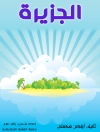This book offers a detailed analysis of China’s original view of literature and art theory and critical practice from the ancient to the modern period, providing views on dancing, image making, the circulation of artifacts, critical theory, creative writing, art design, aesthetic, cyber arts, photography, etc. This book makes visible the traditional Chinese ideas, philosophy and practices on literature and art in the world and contributes to the diversity of current international literary and art studies. All 15 chapters are translations of selected high-quality original theoretical contributions on Chinese literary and art theory published in prestigious peer-reviewed Chinese journals, whose authors are established scholars in Chinese academia.
Tabela de Conteúdo
1. An Overview of China’s Recent Developments in Art and Literature.- 2. The Chinese Turn in Modern Art.- 3. The Model and Path of Constructing a Chinese School of Critical Discourse.- 4. Live Streaming and the Circulation of Traditional Culture and Art.- 5. “Who Is the Judge of Poetry?’ Exploring the Role of Ancient Literary and Art Critics.- 6. “The Breaking Down” and “Establishment” in “Guochao” Dancing.- 7. The Reception and Circulation of Contemporary Art and Literary Criticism in the English Speaking World.- 8. Image Composition and the Construction of Artistic Conception.- 9. Design 2022: The Continuous Construction of Design Capability and Design Spirit.- 10. On the Transformation of Aesthetic Studies from “Literary and Art Aesthetics” to “Art Aesthetics”.- 11. Literary and Art Aesthetics—The Unique Terminologies and Complex Relations in China’s Interaction with the World.- 12.Internet Literature and Art in 2022—Building the Path and Lighting the Sky.- 13. The Path to Building Modern Literature and Art on the Basis of Chinese Tradition.- 14. “Imagined Folk”: On the Story World and Cultural Implications of Chinese Network Costume Drama.- 15. On The Discourse Practice of Localizing Photography and Its Displaced Relations with Art Revolution.
Sobre o autor
Xu Yuechun is at China Federation of Literary and Art Circles, Center for Literature and Art Criticism, Beijing, China.
Wang Ning is at Shanghai Jiao Tong University, School of Humanities, Shanghai, China.












